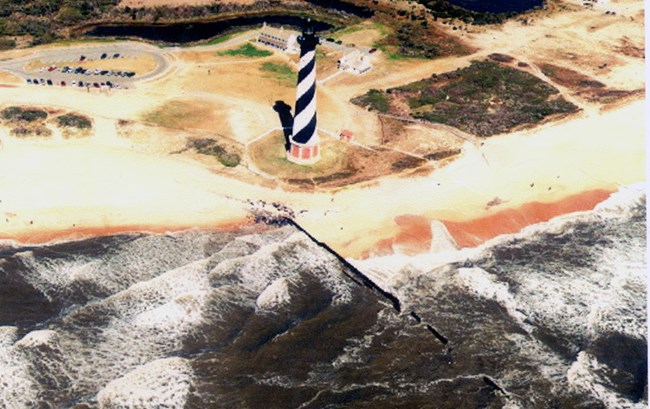The answer is most likely yes, according to an article in the Charlotte Observer. “If we hadn’t moved the lighthouse, we’d be regularly dealing with the wrath of the ocean pounding that lighthouse in tropical storms and hurricanes,” David Hallac, superintendent of North Carolina’s Cape Hatteras National Seashore, said. “We’re talking about waves smacking against the lighthouse.”
The extant lighthouse tower was 1500 feet from the ocean when it was built in 1870. After a century of storms eroding sand from the island’s ocean-facing side, it was just 120 feet from the edge, and it was much closer than that before its 1999 move.

Click here to read more in the Charlotte Observer.
Click here to read more about the 1999 move of the lighthouse.
* * * * * *
U.S. Lighthouse Society News is produced by the U.S. Lighthouse Society to support lighthouse preservation, history, education and research. You can receive these posts via email if you click on the “SUBSCRIBE” button in the right-hand column. Please support this electronic newsletter by joining the U.S. Lighthouse Society if you are not already a member.
If you have items of interest to the lighthouse community and its supporters, please email them to Jeremy at nelights@gmail.com.

Candace was the US Lighthouse Society historian from 2016 until she passed away in August 2018. For 30 years, her work involved lighthouse history. She worked with the National Park Service and the Council of American Maritime Museums. She was a noted author and was considered the most knowledgable person on lighthouse information at the National Archives. Books by Candace Clifford include: Women who Kept the Lights: a History of Thirty-eight Female Lighthouse Keepers , Mind the Light Katie, and Maine Lighthouses, Documentation of their Past.


The aerial photo also shows how the jetty that was built captured sand being washed southward by littoral drift wave action. Without that jetty the lighthouse would have been seriously threatened much earlier.